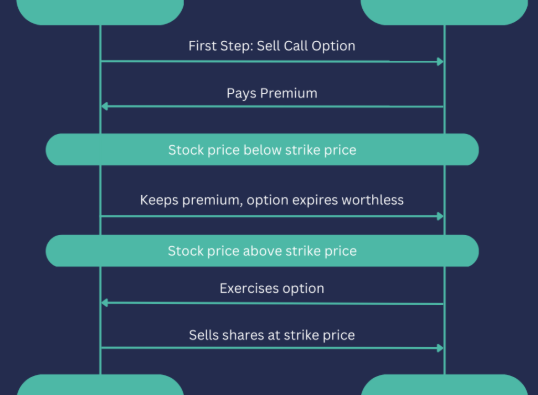
Are you looking for ways to generate a steady stream of income every month? Whether you’re a working professional seeking extra income or a retiree looking for a reliable payout, India offers several lucrative investment options that can help you achieve financial stability. In this article, we’ll explore the best investment plans available in India that are designed to provide consistent monthly income.
Best Monthly Income Investment Plans
- Post Office Monthly Income Scheme (POMIS)
The Post Office Monthly Income Scheme is a government-backed, fixed-income plan that ensures guaranteed monthly payments. It’s a low-risk investment option, making it ideal for conservative investors who prefer security over high returns. - National Savings Certificate (NSC)
NSC is another government-backed fixed-income product that offers attractive interest rates. While it doesn’t provide monthly income directly, it can be a reliable source of regular income when combined with other strategies. - National Pension Scheme (NPS)
NPS is a long-term retirement-focused scheme offering tax benefits and monthly payouts post-retirement. It’s suitable for individuals looking to build a pension corpus that provides consistent income after they stop working. - Senior Citizen Savings Scheme (SCSS)
Tailored for senior citizens, SCSS offers higher interest rates and is a popular choice for those over 60 years. It’s a safe investment that ensures regular income along with tax-saving benefits. - Government and Corporate Bonds
Government and corporate bonds provide fixed interest payments, often on a quarterly or monthly basis. These bonds are relatively low-risk investments and offer predictable returns. - Life Insurance Savings Plans
Some life insurance policies combine savings and investment features, providing regular payouts. These plans often offer a lump sum payout at the end of the term, along with smaller periodic payments throughout the policy duration. - Fixed Deposits (FDs)
Fixed deposits are a popular investment tool for monthly income generation. They offer a fixed rate of interest and are offered by almost every bank and financial institution, making them an easy and secure choice for income. - Debt Mutual Funds
Debt mutual funds invest in low-risk securities such as government bonds or corporate debt. They provide regular income in the form of dividends and can be an effective way to generate monthly returns. - Monthly Income Plans (MIPs) in Mutual Funds
MIPs are hybrid mutual funds that combine debt and equity components, offering the potential for steady monthly income along with the opportunity for capital growth. These plans are designed for investors seeking moderate risk with regular returns. - Gold Monetization Scheme
This unique scheme allows you to earn interest by depositing your idle gold. If you have gold that’s not being used, this can be a way to generate monthly income while keeping your asset intact. - Real Estate Investments
Investing in property for rental income is another long-term strategy to ensure consistent monthly income. With the right location and property management, real estate can be a stable source of revenue. - Dividend Stocks
Dividend-paying stocks provide shareholders with a regular income stream. By investing in companies that consistently pay dividends, you can create a reliable source of monthly income, while also benefiting from potential stock price appreciation. - Peer-to-Peer (P2P) Lending
P2P lending platforms allow individuals to lend money to borrowers in exchange for regular interest payments. It offers an opportunity for higher returns, but it comes with a higher risk of default.
Key Considerations Before Investing in Monthly Income Schemes
Before investing in any monthly income scheme, there are several factors you should consider to make an informed decision:
- Stability
Check the stability of the institution offering the investment. Research their track record, financial stability, and reputation in the market. Opt for well-established and reliable entities to reduce the risk of defaults. - Returns
Evaluate the expected returns and compare them with other available options. Generally, higher returns come with increased risk, so it’s essential to balance risk and reward based on your financial goals. - Risk Assessment
Every investment involves some risk. Whether it’s interest rate changes, inflation, or market fluctuations, ensure that you understand the risks before committing. Diversifying your investments can help manage these risks. - Investment Amount
Determine how much you’re willing to invest and ensure it aligns with your financial plan. Avoid over-investing in a single option and create a diversified portfolio that balances income and growth potential. - Liquidity
Look into the liquidity of the scheme. Some plans may allow partial withdrawals, while others may lock your funds for a certain period. Make sure the investment fits your financial needs and timeline. - Fees and Charges
Some investment plans come with management fees, charges, or taxes that can affect your overall returns. Be sure to consider these additional costs before making a decision. - Professional Advice
If you’re unsure about the best investment strategy for your needs, consult a financial advisor. They can provide personalized advice based on your risk tolerance, financial situation, and goals.
Best Investment Plans for 2023
- Post Office Monthly Income Scheme (POMIS)
A risk-free government-backed scheme, POMIS offers fixed monthly payouts and is ideal for those looking for security and stability. - National Savings Certificate (NSC)
This government-backed fixed-income option offers steady interest, though it requires a longer commitment compared to monthly income schemes. - National Pension Scheme (NPS)
NPS is focused on retirement planning, allowing you to accumulate wealth over the years for a guaranteed monthly income after retirement. - Senior Citizen Savings Scheme (SCSS)
Perfect for retirees, SCSS offers attractive interest rates and regular payouts, along with tax benefits. - Government and Corporate Bonds
Bonds offer predictable returns and are a reliable source of income for those seeking minimal risk. - Life Insurance Savings Plans
These policies offer both insurance and savings benefits, providing regular payouts and lump sum returns. - Fixed Deposits (FDs)
A simple and safe option, FDs offer a guaranteed return and can be tailored to your desired term length. - Debt Mutual Funds
Debt funds invest in bonds and other fixed-income instruments, offering regular payouts with moderate risk. - Monthly Income Plans (MIPs) in Mutual Funds
MIPs combine debt and equity to provide regular payouts with a chance for capital growth, offering a balanced investment opportunity. - Gold Monetization Scheme
This scheme allows you to earn interest on your gold holdings, making it a unique way to generate monthly income. - Real Estate Investments
Investing in rental properties can provide steady income through monthly rent, but requires a larger capital investment and careful management. - Dividend Stocks
Investing in dividend-paying stocks provides a dual benefit of regular income and potential capital appreciation. - Peer-to-Peer Lending
P2P lending allows you to earn interest by lending money, but it comes with higher risk and requires careful consideration.
The Importance of a Monthly Income Plan
Having a consistent monthly income stream is crucial for financial stability. It ensures that you can cover your day-to-day expenses, plan for the future, and save for long-term goals. A reliable income also helps reduce financial stress and provides a sense of security, especially during uncertain times.
Creating a diversified income plan allows you to manage your cash flow effectively, making it easier to meet financial obligations and invest for the future. With multiple income sources, you reduce the risk of relying on a single stream, such as a job, and protect yourself against unexpected disruptions.
FAQs
- What is the minimum amount for a fixed deposit in India?
The minimum amount varies by bank but is generally affordable, making fixed deposits accessible for most investors. - Are dividends from stocks taxed in India?
Yes, dividends are taxed in India, but companies pay a dividend distribution tax before the dividends are distributed to shareholders. - Can NRIs invest in SCSS?
No, the Senior Citizen Saving Scheme is only available to resident senior citizens. - How often is interest paid in POMIS?
Interest is paid monthly, providing a steady income stream. - What is the lock-in period for PPF?
The Public Provident Fund has a 15-year lock-in period, with the option to extend it in blocks of five years.
Conclusion
India offers a wide range of investment opportunities to generate a reliable monthly income. By carefully evaluating your options and considering factors such as risk, returns, and liquidity, you can create a well-balanced investment portfolio. With the right strategy, you can secure a steady income and achieve your financial goals.









